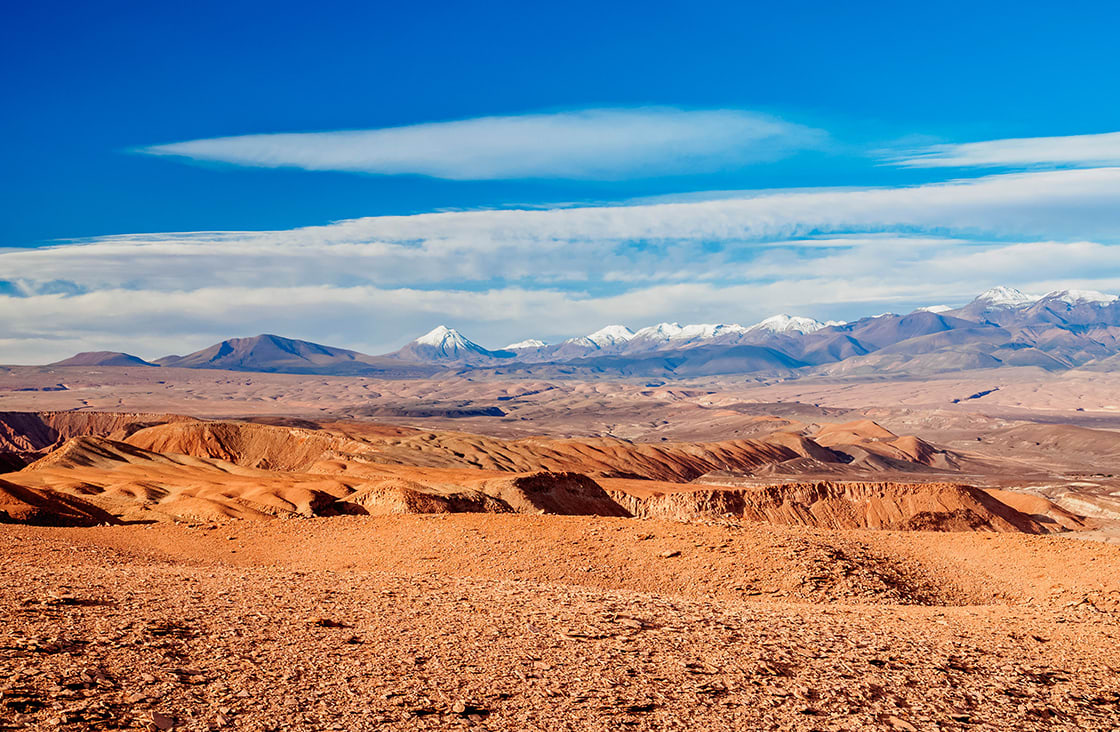
From Santiago’s rich cultural scenes and Valparaíso’s fascinating art, to an abundance of superb national parks and conservation areas, to the overwhelming wilderness of Patagonia, and some sensational natural monuments such as Los Pingüinos Natural Monument, the number and variety of things to do in Chile will give you a multitude of good reasons to visit this beautiful country. Read on for a list of the best things to do in Chile.

San Francisco Church In Chiloe Island
At the whimsical Chiloe Island, you’ll be greeted by colorful wooden houses hovering over the water. Measuring 155 miles in length and 31 miles in width, the island is separated from the Chilean mainland by the 1.2-mile wide Chacao Channel. This uniquely independent land is shrouded in myths and legends and is surrounded by seawater that often puts on a show of blue whales. On land, you’ll find a lush landscape that’s home to wild national parks, old wooden churches, and wet, dense forests.
The local people have a rich culture along with some decadent culinary traditions that are just waiting to be discovered. In addition to the island’s numerous old iconic wooden churches, which are remnants of the communities established by the Jesuit missionaries who settled here in the 1600s, you’ll see plenty of attractive, colorful old homes. These houses are known as palafitos; they are snuggled along the shoreline and raised out of the water on stilts. Many of the island’s old churches, too, are painted brightly and should be visited. Visiting Chiloe Island is one of the most magical things to do in Chile.
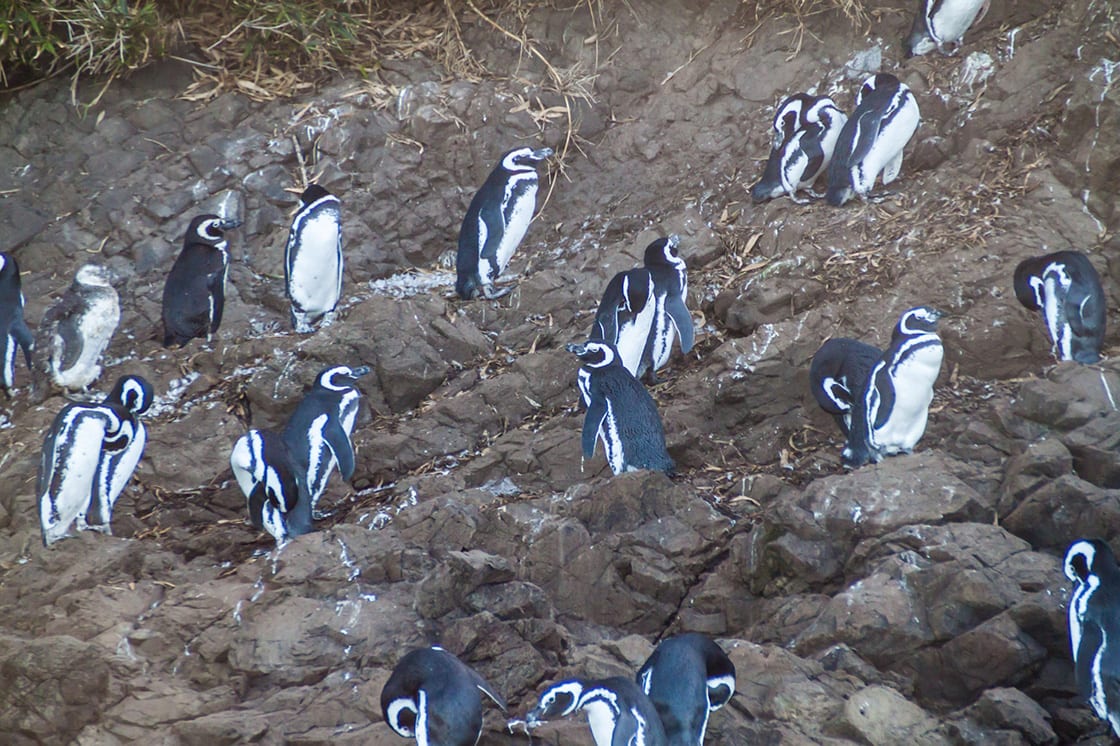
Penguins In Protected Area
In addition to its national parks, more of Chile’s important conservation efforts can be seen in its many natural monuments. One of the most popular is the Los Pingüinos Natural Monument 21 miles northeast of the city of Punta Arenas. Magdalena Island and Marta Island, situated in the middle of the Strait of Magellan, are the main part of this natural monument, which is home to one of Chile’s largest penguin colonies, consisting of some 60,000 breeding pairs of Magellanic penguins. Accessible only by guided boat tours, the islands are also home to large colonies of seals and sea lions. The best time to visit Magdalena Island is from November until March when the birds migrate back here and find their mate.
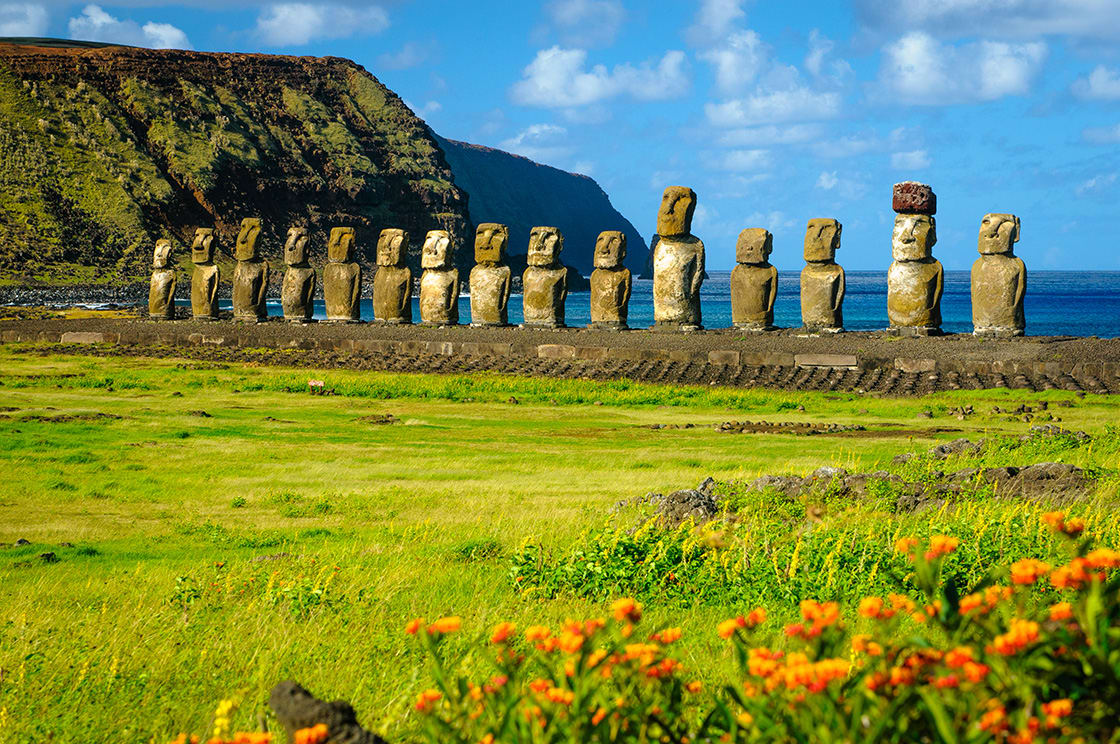
The Ancient Moai Of Ahu Togariki On Easter Island
For decades, the allure of Easter Island, the most isolated inhabited place on earth, has been attracting visitors curious to discover the dramatic scenery and the mysterious giant statue heads known as Moai. Perhaps the most popular thing to do on this volcanic island is to watch the sunrise over the 15 moai in Ahu Tongariki. This location is exceptionally special as it holds the best-restored moais on the island.
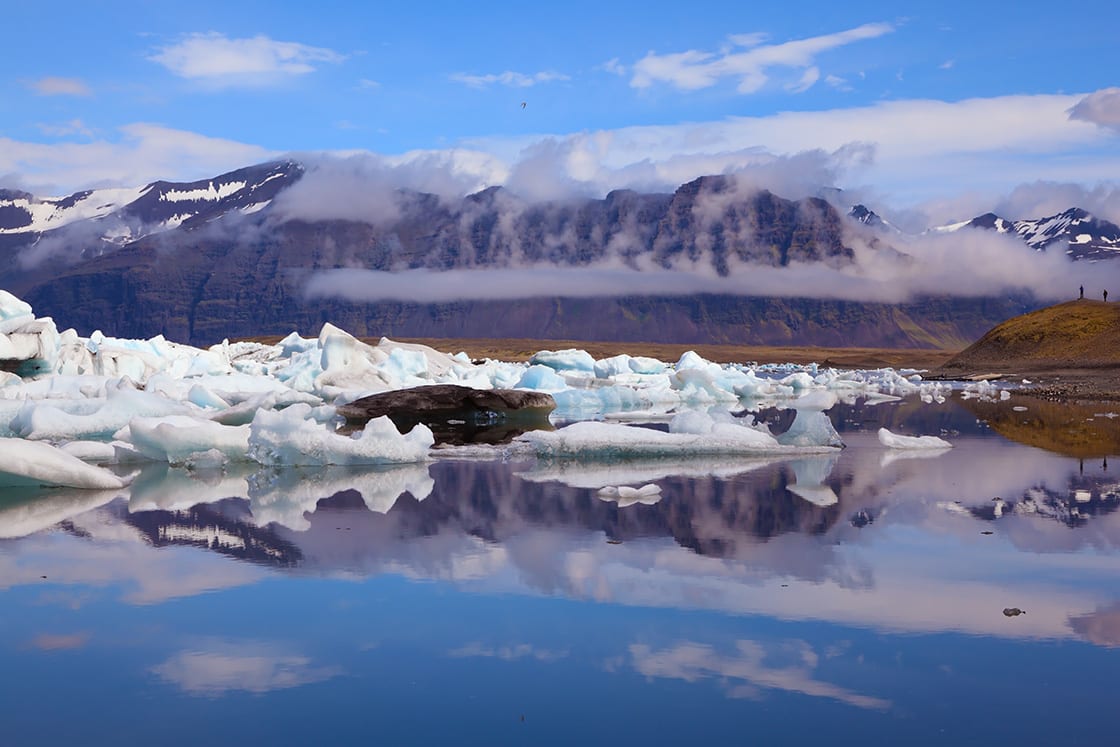
Mountains In The Chilean Fjordos
Cruise through the Chilean Fjords and discover the wild terrain and stark beauty of Patagonia. Admire the jaw-dropping depth of the fjords, the icy blue of massive glaciers, and the jagged peaks of snow-capped mountains. Nowhere is more stunning than the incredible Glacier Alley: a navigable channel bordered by a series of colossal, ice-blue glaciers which seem to pour from the Darwin Mountains into the sea. Experience the truly unforgettable moment when a new iceberg carves from the edge of a glacier to crash into the waters beneath.
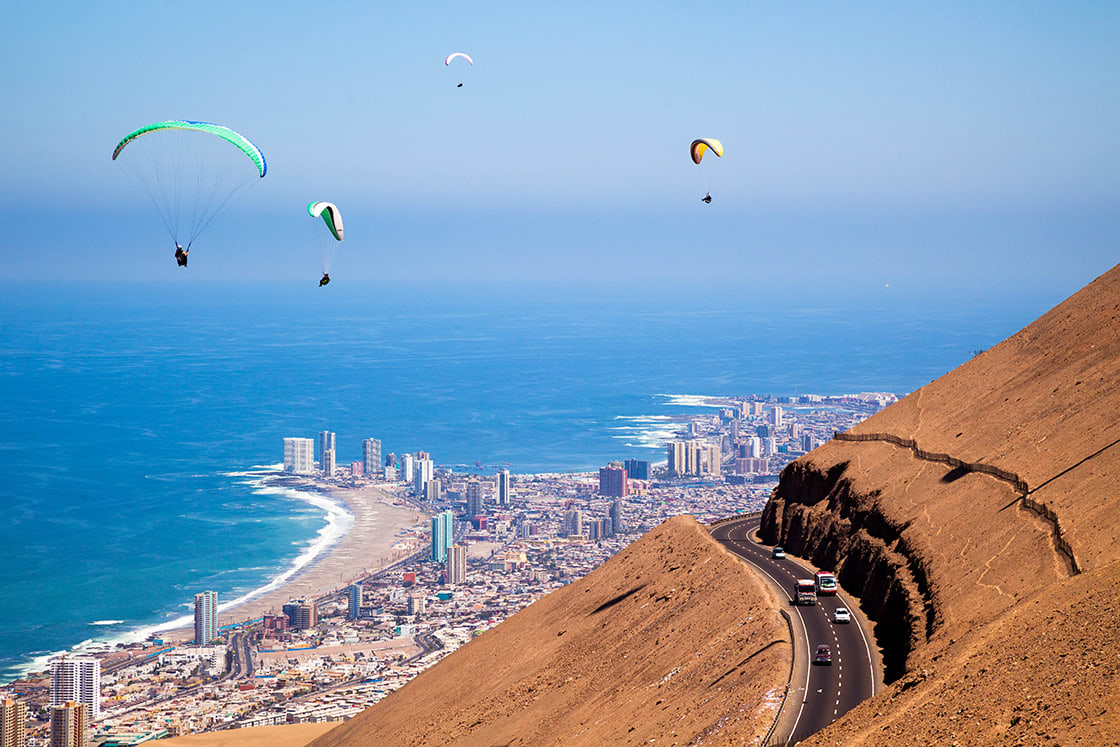
Paragliding In Iquique
Sitting in the far north, Iquique is a coastal town set around Playa Cavancha, a wide sandy beach perfect for sunbathing or watersports. Take a surf lesson, try sandboarding on the surrounding dunes, or simply relax and enjoy the chilled outdoor atmosphere. If you’re looking for an adrenaline kick, Iquique is also a great place to paraglide. Fly through the air, taking in the gorgeous views of the Chilean coastline, before landing right on the beach.
At night you can gamble in this casino town, which is the Monte Carlo of Chile.
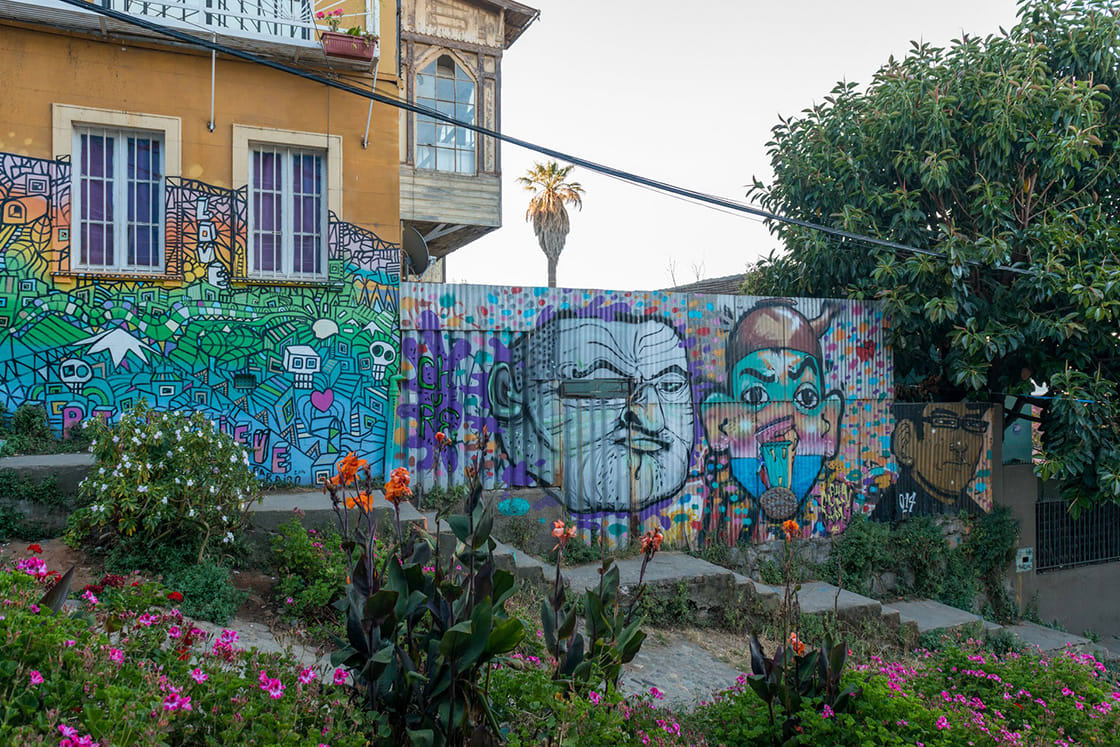
Art Street In Valparaiso
The narrow streets and alleyways of Valparaiso are home to some of the best street art in South America. Climb up the winding staircases of Cerro Concepcion and you’ll discover colorful artwork of all styles lining the walls.

Panoramic View Of Torre Costanera, In Santiado de Chile
Resting in a valley against the breathtaking backdrop of the snow-capped Andes Mountains, the sophisticated, bustling, cosmopolitan capital of Chile is home to forty percent of the country’s population and full of life and energy. With a wide range of great museums, theaters, galleries, and more, there is a vibrant cultural scene. You can stop by its world-class restaurants and walk through its fancy neighborhoods and leafy hillside parks before heading to the lively nightlife spots and bars in Barrios Brasil. A highlight of any visit to Santiago is taking the aerial tramway to San Cristóbal Hill for its stunning views. Due to
Santiago’s proximity to the ocean and the mountains, it is possible to ski and visit the beach on the same day.
The high altitude of the Atacama Desert coupled with almost zero pollution, and very few clouds, presents a star-studded night sky with the most majestic astronomical sightings. You can book a stargazing tour with a professional guide.
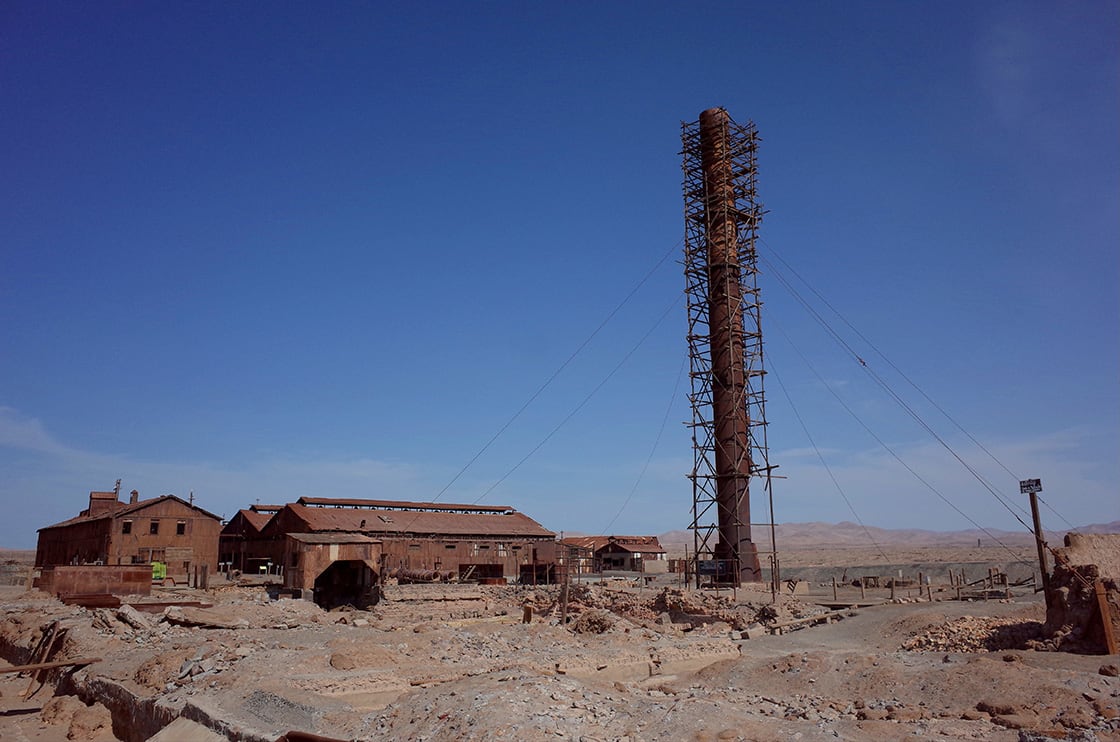
The Abandoned Humberstone Saltpeter Works
Situated near the northern port city of Iquique in the remote Atacama Desert, the Humberstone and Santa Laura Saltpeter Works are two former saltpeter refineries located in northern Chile. They were declared a UNESCO World Heritage Site in 2005, as a testament to the historical importance of saltpeter (sodium nitrate) mining in Chile and the culture and social agenda that developed around it.
Humberstone and Santa Laura bear witness to the birth, growth, and decline of the nitrate industry that marked Chile’s economy between the 19th and 20th centuries. From the 1870s through to the 1950s, these sites played a fundamental role in the “saltpeter fever”, stimulated by the increasing demand for sodium nitrate, a fertilizer used on agricultural lands in America and Europe. These mining towns were home for more than eight decades to thousands of Chilean, Bolivian, and Peruvian workers, who toiled in this hostile desert environment extracting and processing nitrate, while forging a distinctive pampino culture.
The land became a source of great prosperity to the country. It echoes the struggle of miners and their families for better living conditions, which gave birth to the Chilean labor movement. Although derelict since 1960, the site offers a fascinating glimpse into the tough conditions faced by these pampinos, with many of the site’s larger structures still standing and able to be explored. Professional guides are recommended given the area’s remoteness and harsh climate.
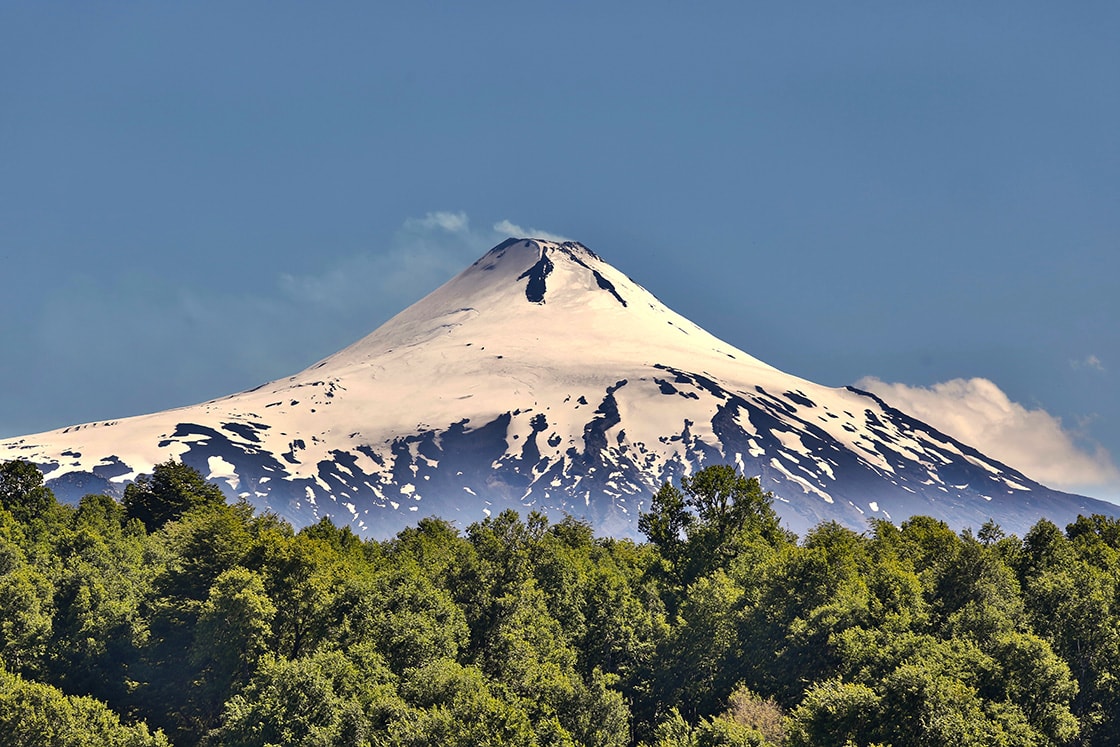
Villarrica Volcano Of The City Of Pucon In Chile
Pucon is a pretty little lakeside town, over which looms the mighty Villarrica Volcano, which is one of the most active volcanoes in Chile. Take a tour here and after a few hours climb, you’ll be able to look into an active volcano. Relax at the end of the day in one of the many hot springs in the vicinity of the town. You can also visit the turquoise waterfalls at the nearby Ojos del Caburgua, where you’ll discover three different waterfalls and clear blue water. Afterward, continue onto Playa Blanca and relax alongside the shore of Lake Caburgua.
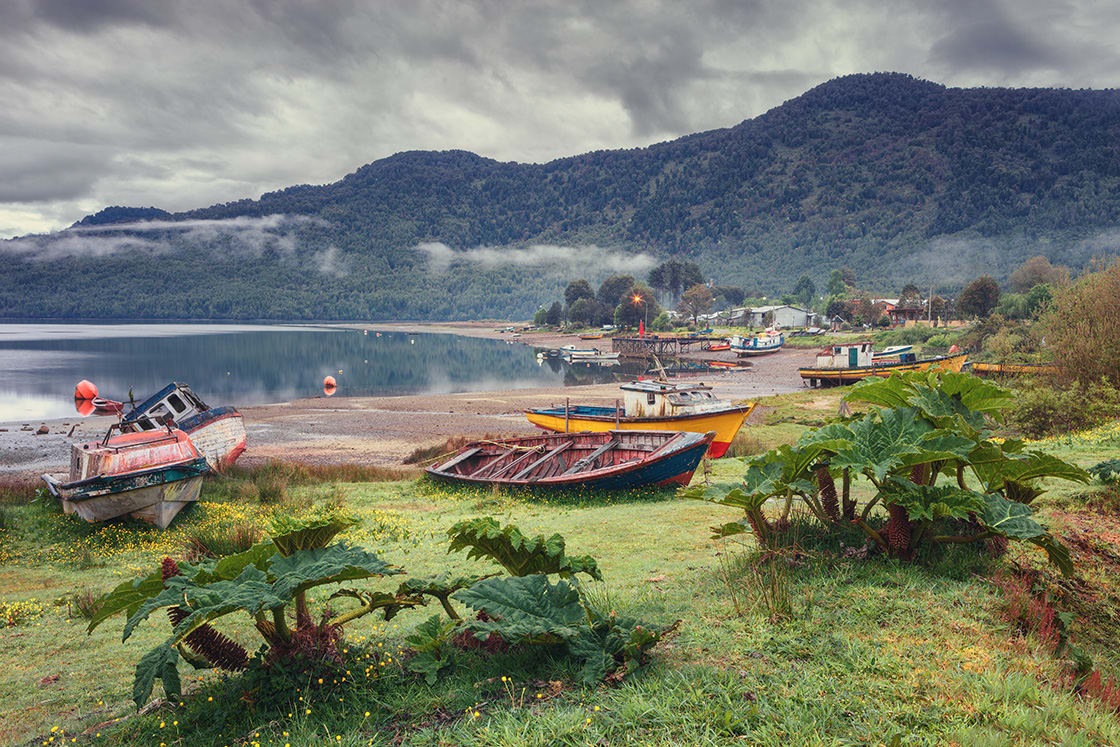
Sunrise At Puyuhuapi Fjord In The Pacific Ocean
Most people won’t have heard of Puyuhuapi, but it’s a dear little town with one big attraction that definitely makes it worth a stop on any Chilean itinerary. Puyuhuapi is home to Queulat National Park and its Hanging Glacier. You can walk around the well-marked and maintained trails, which will lead you to different viewpoints of the glacier. The viewpoint that is closest to the glacier is Sendero Ventisquero Colgante. Boat trips are also available to see the glacier from yet another perspective.
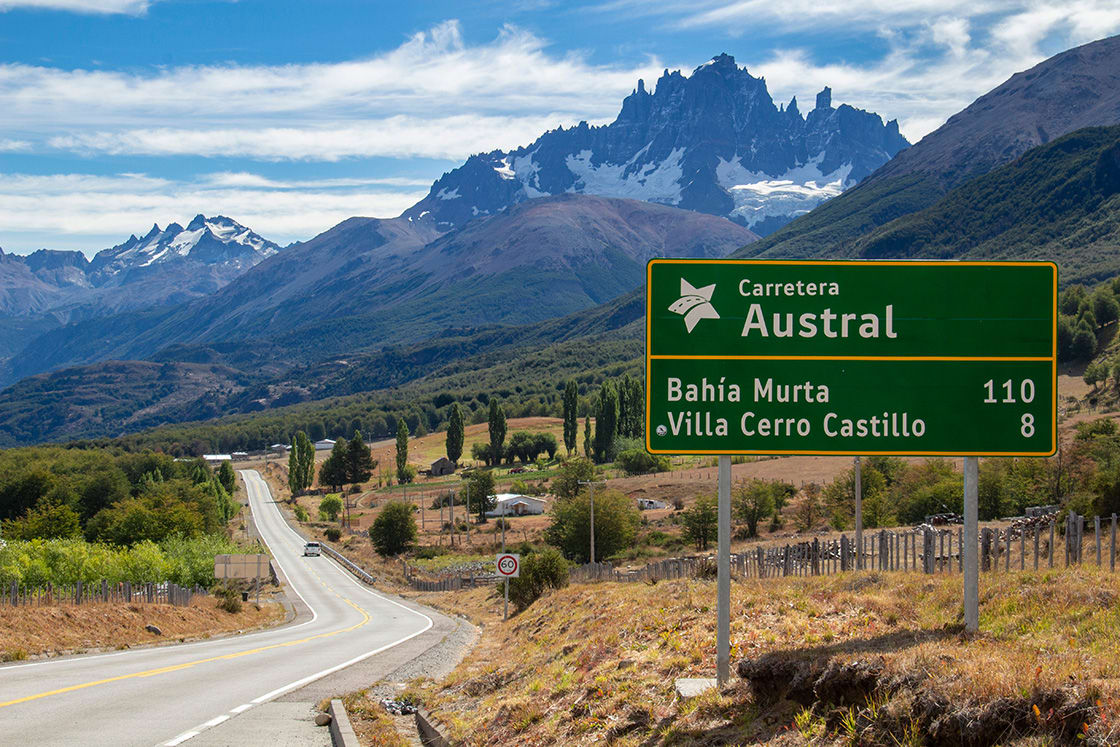
Cerro Castillo, Patagonia -Chile
There are several options for trekking the Cerro Castillo National Park. You can take a multi-day hike along the Las Horquetas Circuit, which takes you through the best parts of the Park including glaciers and mountain spires. There are no lodges here, only campsites, and you’ll probably have most of the trail to yourself. If you’re short on time, make the day hike to the most beautiful spot of the multi-day trek, the glacial lagoon sitting at the base of Cerro Castillo. It’s a challenging hike, but the turquoise blue lagoon surrounded by the snow-covered mountains is awe-inspiring and totally worth the steep trek.
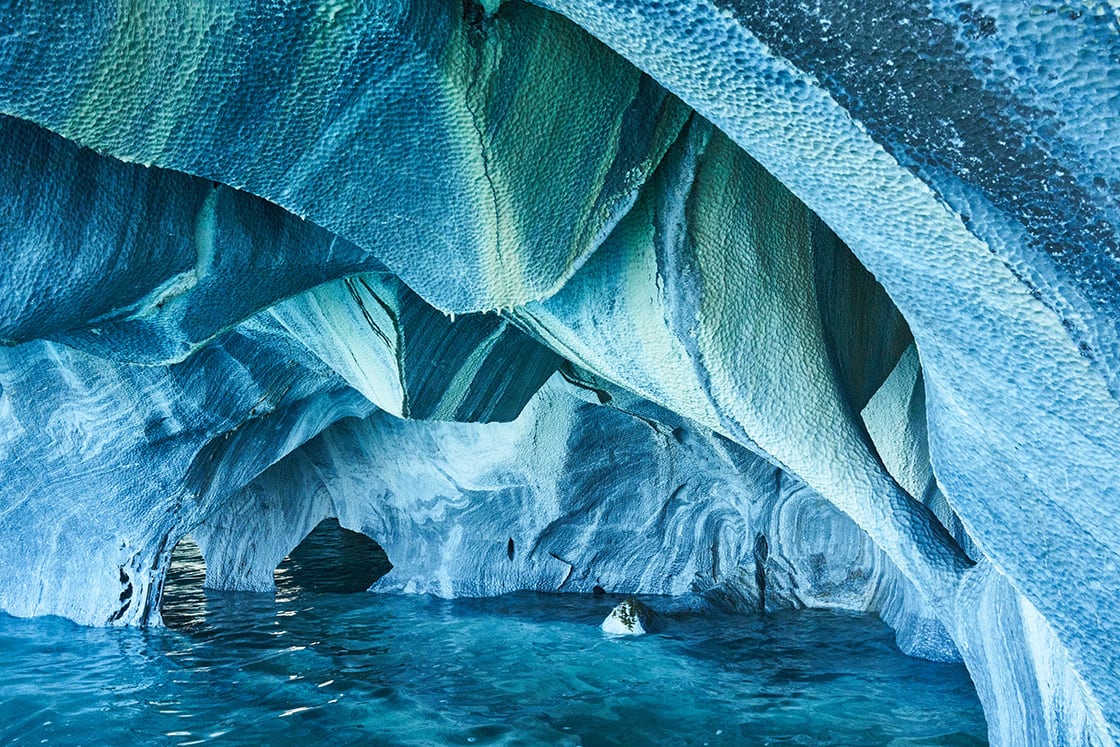
The Marble Caves
Rio Tranquillo sits alongside the shore of Lake General Carrera, and is home to the incredible Marble Caves. Book a 90-minute boat tour from any of the agencies in town, and have your camera ready for the beautiful colors of the caves contrasted with the bright blue water. This is without a doubt one of the best things to do in Chile.

Amphitheatre Is A Beautiful Geological Formation Of Moon Valley In Atacama
Valle de la Luna is named after its lunar-like landforms eroded by eons of flood and wind. It’s located near San Pedro de Atacama at the northern end of the Cordillera de la Sal and forms part of Reserva Nacional Los Flamencos. Sunsets here are phenomenal. A beautiful transformation occurs as the distant ring of volcanoes and the surreal lunar landscapes of the valley are suddenly bathed in intense purples, pinks, and golds.
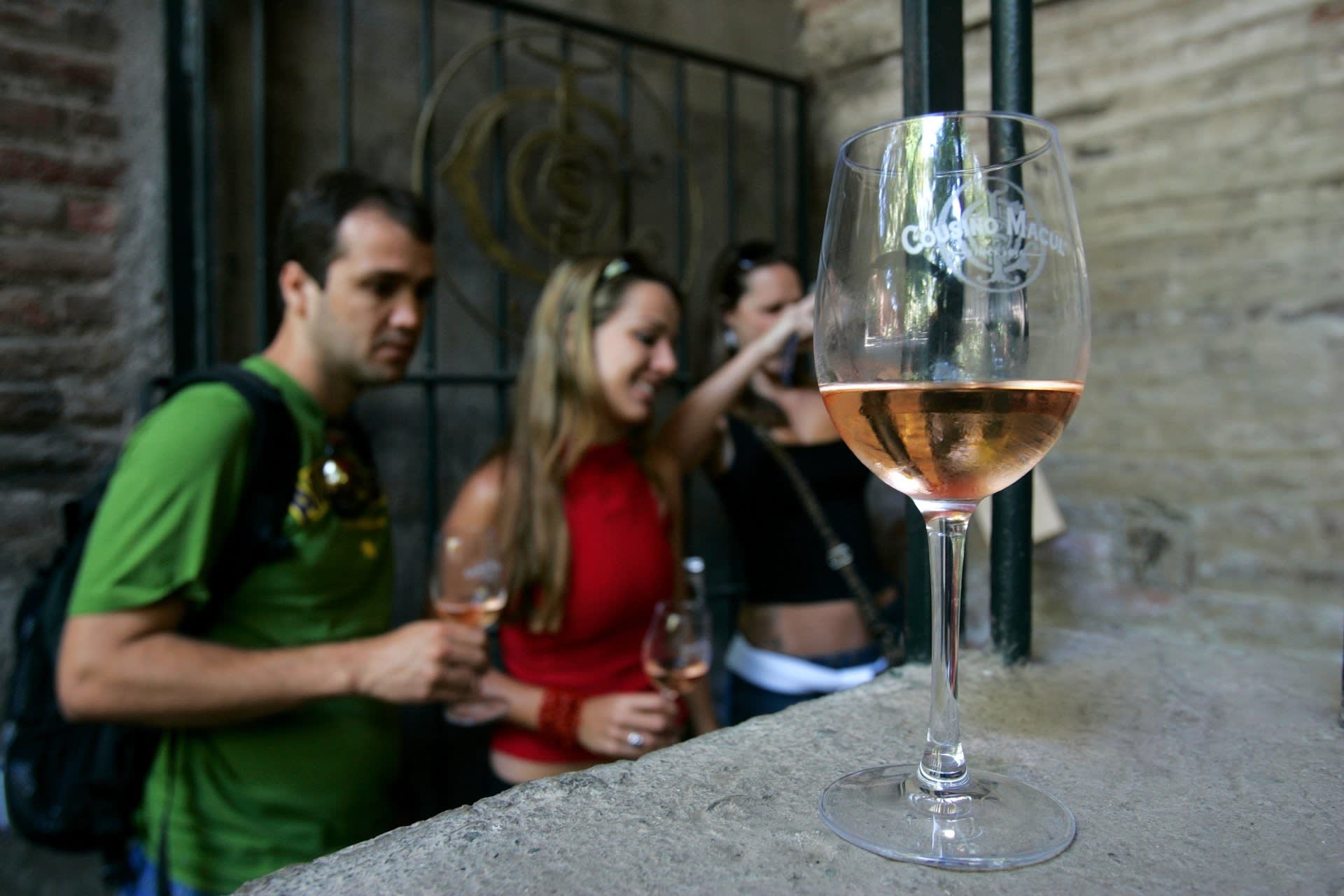
Wine Testing At Cousiño Macul Bodega
Chile is famous for its wine. The hearts of wine lovers from all over the world have been conquered with delicacies like Malbec or Carménère. If you are a wine aficionado, you should visit some of the local wineries in the valley, where you can enjoy a tour and an unforgettable wine tasting.
Located in the far north of Chile, Lauca National Park is characterized by high plains and mountain ranges, large volcanoes, and a number of important archaeological sites. You can hike around the Park’s many pristine mountain lakes, most notably Cotacotani and Chungara, which reflect the scenery around them to stunning effect. The region is especially popular for bird-watchers and is home to more than 140 bird species, including Andean geese, crested ducks, Chilean flamingos, and the massive Andean condor.
The Valle Nevado (Snowy Valley) resort region in the El Plomo foothills of the Andes, beckons you with mostly clear skies and great snow thanks to its high elevation, 9,900 feet above sea level; it is skiable 112 days a year. The resort features 37 trails and 11 lifts, and is a popular family experience, just as it is sought after by seasoned skiers and snowboarders. A snow school is located on-site, along with a ski shop and a tour company featuring heli-skiing adventures.
While Rainforest Cruises aim to provide accurate and up-to-date information, we make no representations as to the accuracy or completeness of any information herein or found by following any link on this site. Rainforest Cruises cannot and will not accept responsibility for any omissions or inaccuracies, or for any consequences arising therefrom, including any losses, injuries, or damages resulting from the display or use of this information.




